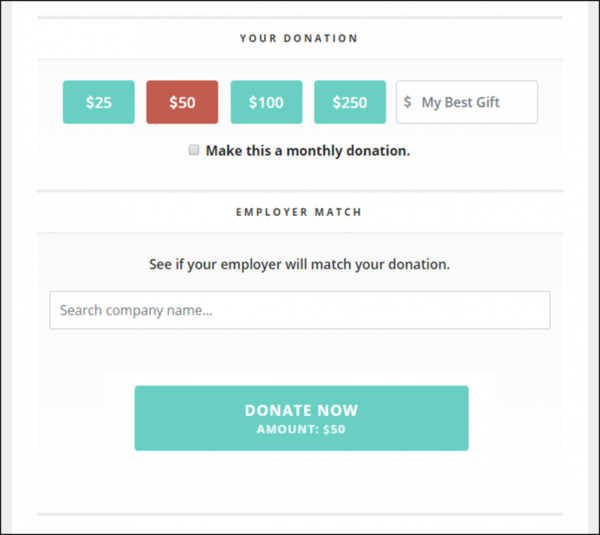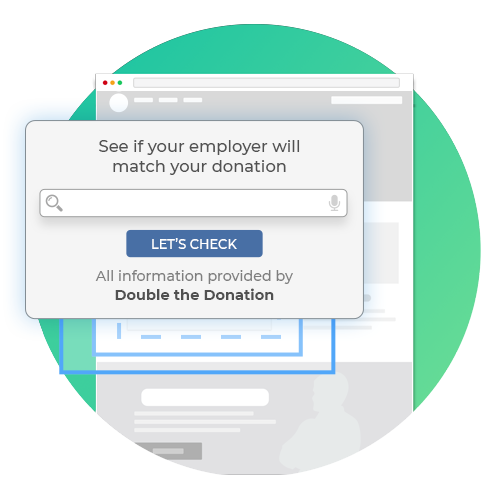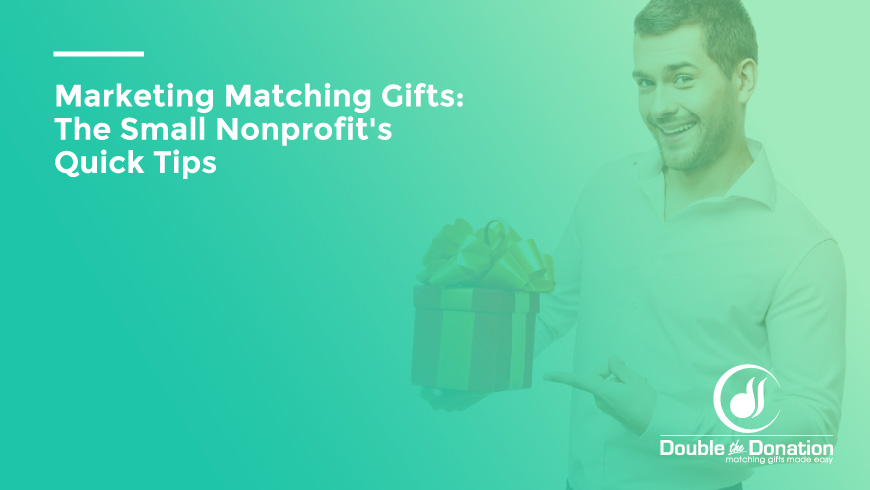Employer matching gifts have the power to transform your nonprofit’s fundraising strategy, even if your donor base isn’t substantial. They enable eligible donors to double (sometimes even triple!) the donations they’re already making. However, nonprofits and donors alike constantly overlook them. In fact, $4-7 billion in matching gift revenue is left on the table every year!
It’s not that they don’t view matching gifts as important. Rather, they simply don’t know this opportunity exists. As proud partners, RaiseDonors and Double the Donation aim to close this knowledge gap. Together, we’re working to boost awareness of matching gifts and to help nonprofits acquire this additional revenue. It all starts with properly marketing matching gifts to your donors.
With a strategic marketing plan in place, you can potentially multiply the donations you’re already receiving. Let’s cover five of the top marketing avenues for matching gifts:
- Donation Form
- Matching Gift Page
- Social Media
- Blog Posts
Ready to improve your matching gift outreach and boost funds? Let’s dive in!
Donor engagement is at its highest when submitting a donation, so this is an opportune moment to promote matching gifts.
The best way to do this is by incorporating a matching gift appeal directly on your donation page. Double the Donation and RaiseDonors have worked to streamline this process. All you need to do is add Double the Donation’s company name search tool to RaiseDonors’ online fundraising forms. This will automatically determine the donor’s matching gift eligibility, so you can easily provide them with next steps for completing the process. With a company search tool on your donation form, your donors:
- Will know they have the opportunity to match their gift.
- Can search the comprehensive database to find their employer and determine their eligibility.
- May give more knowing their donations will have an even larger impact.

Embedding a search tool directly on your donation form and other fundraising forms ensures donors know about every available giving opportunity. Make sure to feature the tool on your confirmation page, too. Not only will donors be compelled to research their matching gift eligibility, but they’ll also be more likely to complete future donations and make larger gifts.
With help from our professional teams, you can streamline this process, make more compelling appeals, and maximize matching gift revenue.

From the moment prospects land on your website, you need to ensure they know about their giving opportunities. Because of the general lack of awareness, you’ll need to put a special emphasis on matching gifts.
Start by including an appeal on your ‘Ways to Give’ page. Include a section on matching gifts, briefly explaining what they are. As donors explore different ways to support your organization, they’ll be intrigued when they come across a new giving vehicle. This appeal doesn’t have to be extensive. Rather, you can stick to explaining what matching gifts are and providing a search tool for prospects to research their eligibility.
For the best results, expand your efforts by creating a dedicated matching gift page. Then, prominently feature it in your navigation bar, so visitors can access it from anywhere on your website. This page should feature:
- An overview of matching gifts
- Why matching gifts are beneficial to donors and nonprofits
- Your organization’s contact information
- A search tool for readers to research their employers

Be sure to share this page with your supporters. By providing them with a reputable matching gift resource, your nonprofit will educate supporters and possibly solicit more donations.

Including matching gift appeals in your communications is one of the easiest steps you can take in promoting these opportunities. After all, you’re already sending out messages and newsletters to supporters on a regular basis.
In each message, give a brief overview of matching gifts. For example, after a supporter has made a donation, you’ll need to confirm and acknowledge their gift. Try including a brief matching gift appeal in your letter, such as:
“Thank you for your gift of $X to our organization. We greatly appreciate your generosity. It’s because of supporters like you that we can continue striving toward our mission. Did you know you can make your donation go even further with a matching gift from your employer? We invite you to research your eligibility to make the most of your contribution.”
Short email appeals such as the one above can go a long way with raising awareness and providing more value to your organization. For more in-depth appeals (such as newsletters), give them step-by-step instructions and include a sample company for reference. Then, express the positive impact matching gifts have on your organization. By doing this, your donors will feel compelled to research their eligibility and complete the match process.

Social media is a powerful communication tool in today’s world. It enables you to reach a wider audience and spread the word about your cause. Many of your supporters spend a considerable amount of time on these platforms, so you’d be remiss in not including matching gifts in your social media plan.
To promote matching gifts online, incorporate these best practices for social media:
- Interact with followers. Let your donors know you’re listening by interacting with them on your posts. Answer any questions they may have, so they completely understand the matching gifts process.
- Schedule your posts. Marketing matching gifts isn’t a one-and-done deal. Schedule reminders about matching gifts on a recurring basis, so supporters remember to submit their match forms.
- Use graphics. To help followers understand the process, include graphics explaining matching gifts. Plus, this is a great way to make your post stand out and capture attention.
Social media enables nonprofits of all sizes to extend their reach. By posting about matching gifts in a strategic way, your organization will drive up support and revenue in no time!

Educational articles are a great way to explain matching gifts and corporate philanthropy to supporters.
These educational posts can be anything from step-by-step instructions to highlights of local employers who match their employees’ charitable donations. No matter the approach, you want to ensure donors recognize the importance of this opportunity. When blogging about matching gifts, consider the following:
- Feature images. Remember, imagery is a fantastic way to convey the importance of matching gifts. Feature eye-catching graphics that explain the process and help to explain other important concepts.
- Include CTAs. When relevant, include CTAs to drive traffic to your high-value pages, like your donation page. This way, motivated readers will know exactly what their next steps are.
- Share them with supporters. After crafting your posts, you’ll need to share them via social media and email. Make sure to share just enough to pique their interest but not too much that you give away all of the content.
By creating educational blog posts on your website, you’ll increase matching gift awareness, drive traffic to your website, and boost donations quickly and easily!
The possibilities for marketing matching gifts are seemingly endless. You can encourage donors to look into their opportunities nearly any time you interact with them so long as you do it strategically. Simply use the above recommendations to get started.
By educating your donors on matching gifts, you maximize the likelihood of them completing the process. With a comprehensive plan in place for promoting matching gifts, you’ll boost revenue and engage donors on a whole new level. After all, small nonprofits need every bit of financial support they can get!
To continue researching this powerful giving vehicle, head on over to 360MatchPro by Double the Donation’s matching gift guide. With our matching gifts expertise and RaiseDonors’ fundraising knowledge, you’re sure to maximize your revenue potential.



